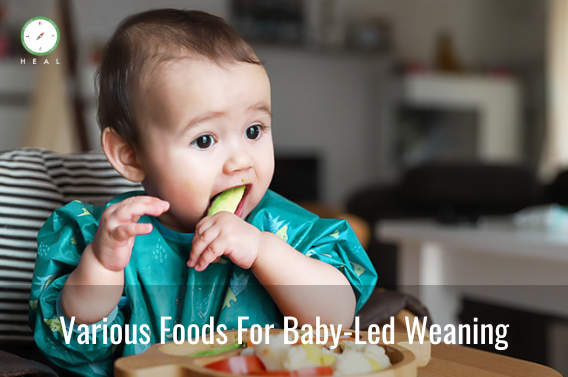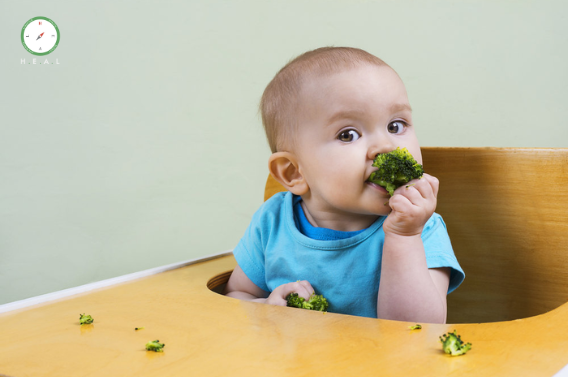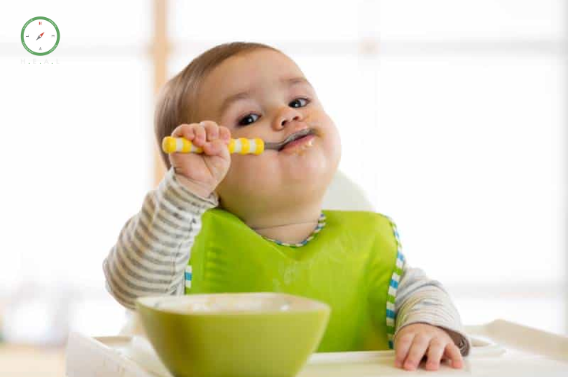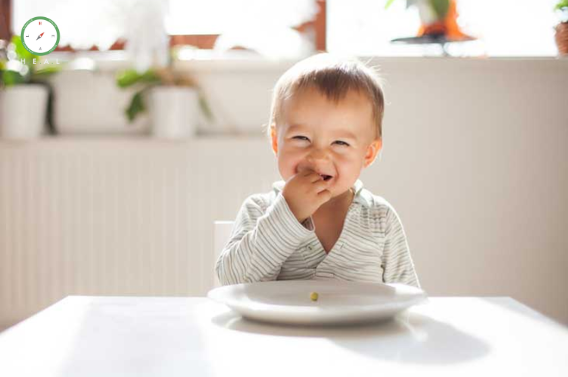During the first few years of their lives, babies reach several important milestones- first word, first laugh, first crawl, first step. In the midst of all this, babies also learn many important life skills, such as how to feed themselves. In the process, what they eat evolves. What this transition looks like varies because there are many ways that babies can learn how to feed themselves. One option is baby-led weaning, or baby-led feeding.

Feeding method, known for short as "baby lead weaning" or "BLW", is a style of feeding babies that allows them to feed themselves from the start. The food is served in thick finger-sized pieces and can be soft and can be easily squeezed between your fingers. This way, the baby led weaning foods is both easier to catch, and there is less risk of suffocation.

Encourages children to become familiar with a variety of textures and flavours. This may make them more likely to develop more varied and healthier food preferences in the long run. Several studies have shown that children who eat a wide variety of foods may be less likely to develop food allergies later in life.
May reduce the risk of child obesity. With spoon feeding, parents are in control but similar to breastfeeding, baby-led milking allows the baby to control how much she eats based on her hunger level. As a result, babies who are spoon-fed are less likely to be overweight than babies.
Promotes fine motor skill development. Sticking to primarily finger foods encourages the development of manual dexterity and hand-eye coordination skills.

Wait until your baby is ready. Your baby should be able to sit in a high chair without support, should have good neck strength, and be able to move food to the back of his mouth with jaw up and down movements. Most healthy babies over the age of 6 months are able to self-feed; however, strong chewing skills in some babies may not be fully developed until 9 months of age.
Cut soft foods into "finger-sized" slices made for grasping. The food is firm enough that they can pick it up and hold it, long enough that the small part sticks out of their hand that they can see, and soft enough to chew. Such as:
Spears of soft ripe fresh fruits, such as bananas, pears, avocados, kiwis and mangoes.
Roasted, baked, or steamed veggies, such as sweet potatoes, carrots, and squash them nicely.
Yogurt - Though it is not necessarily a mess-free option for your baby, yogurt is a taste bud-friendly food with calcium, protein, and gut health benefits. Yogurt is a cultured dairy product, meaning that it contains healthy probiotic bacteria cultures such as Lactobacillus. Probiotics play a prominent role in digestive health and can benefit young children who experience tummy troubles such as diarrhea and constipation.

You and your new nurse will quickly get used to baby-led weaning (even if it feels a little overwhelming at first). For a smooth, low-stress start, keep these trading tricks in mind:
1. Invest in a big bib
Consider putting your baby in just one diaper and covering her with a large bib or smock, and place a drop cloth or newspaper on the floor under the high chair.
2. Start slow
In the beginning, you need to keep only one or two pieces of food in front of your baby at meal times. More and you can overwhelm the child with too many options.
3. Don't worry about the plate or bowl
They'll slam them on the floor anyway. Simply place the food on the table or high-chair tray, and let the party begin.
4. Make slippery foods easy to grab
Is the delicious soft food slipping and sliding in your baby's tender fingers? Grind Cheerio or other whole grain cereals, wheat germ or whole grain crackers into a fine powder, and then "dust" the foods together. This will make it easier for your little one to grasp and chew.
5. Encourage fun
Think of solid food meals as play time, when baby explores different textures and tastes and experiments with chewing. Baby-led weaning is all about getting comfortable with different foods.
Vidhi Beri is a renowned Global Educator and Specialist in the fields of Holistic Health, Lactation, Maternal Health Wellness, Child Nutrition, and Children's Milestone Development with effective and well-structured maternity wellness programs offered to the new wave of freshly home-grown Indian mommies and babies, with her desi tadka of Ancient Indian sciences in her latest book, Decoding Motherhood, one of the best Maternity books India. Visit Vidhi Beri’s official website to know more- https://www.vidhiberi.com/.